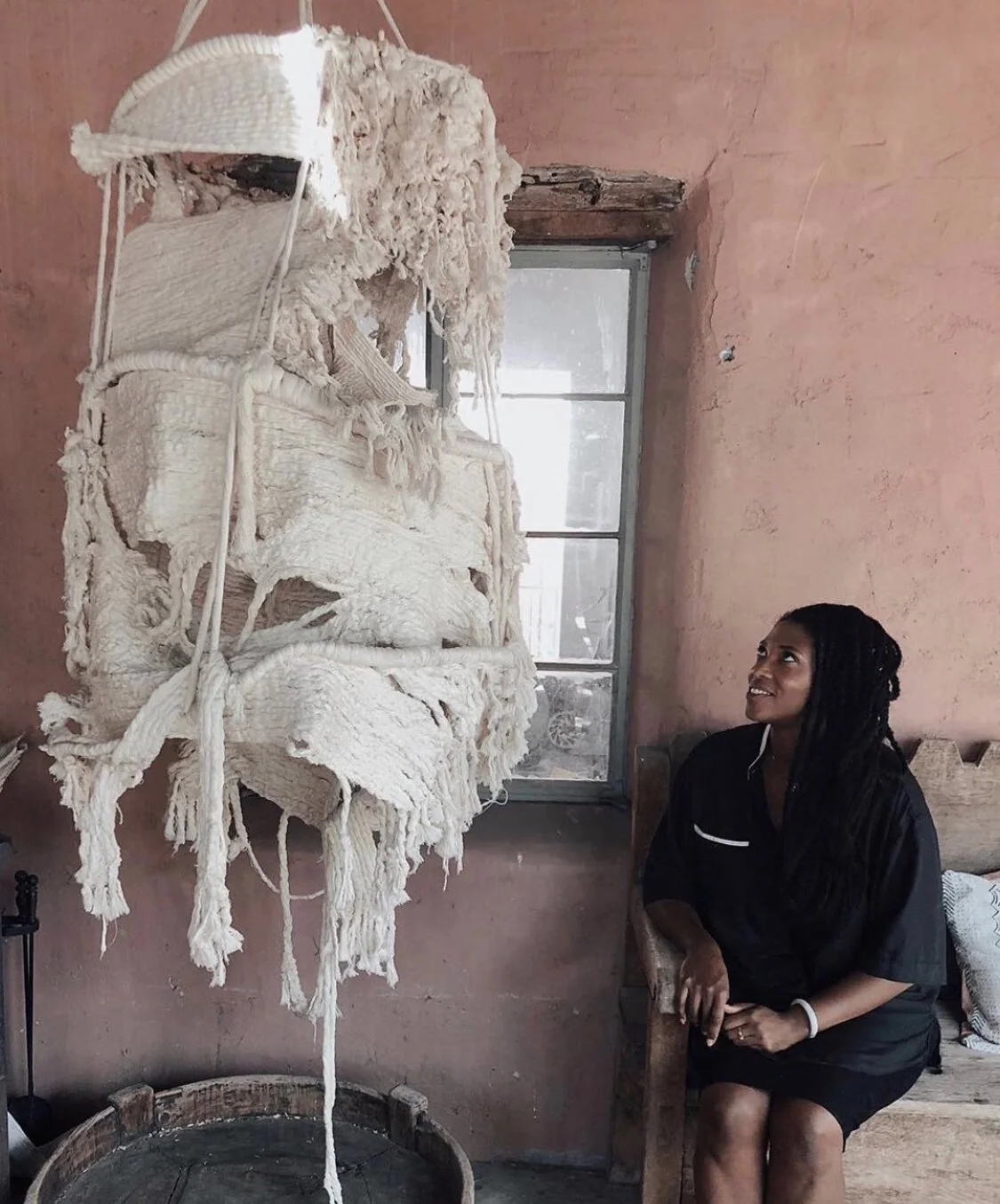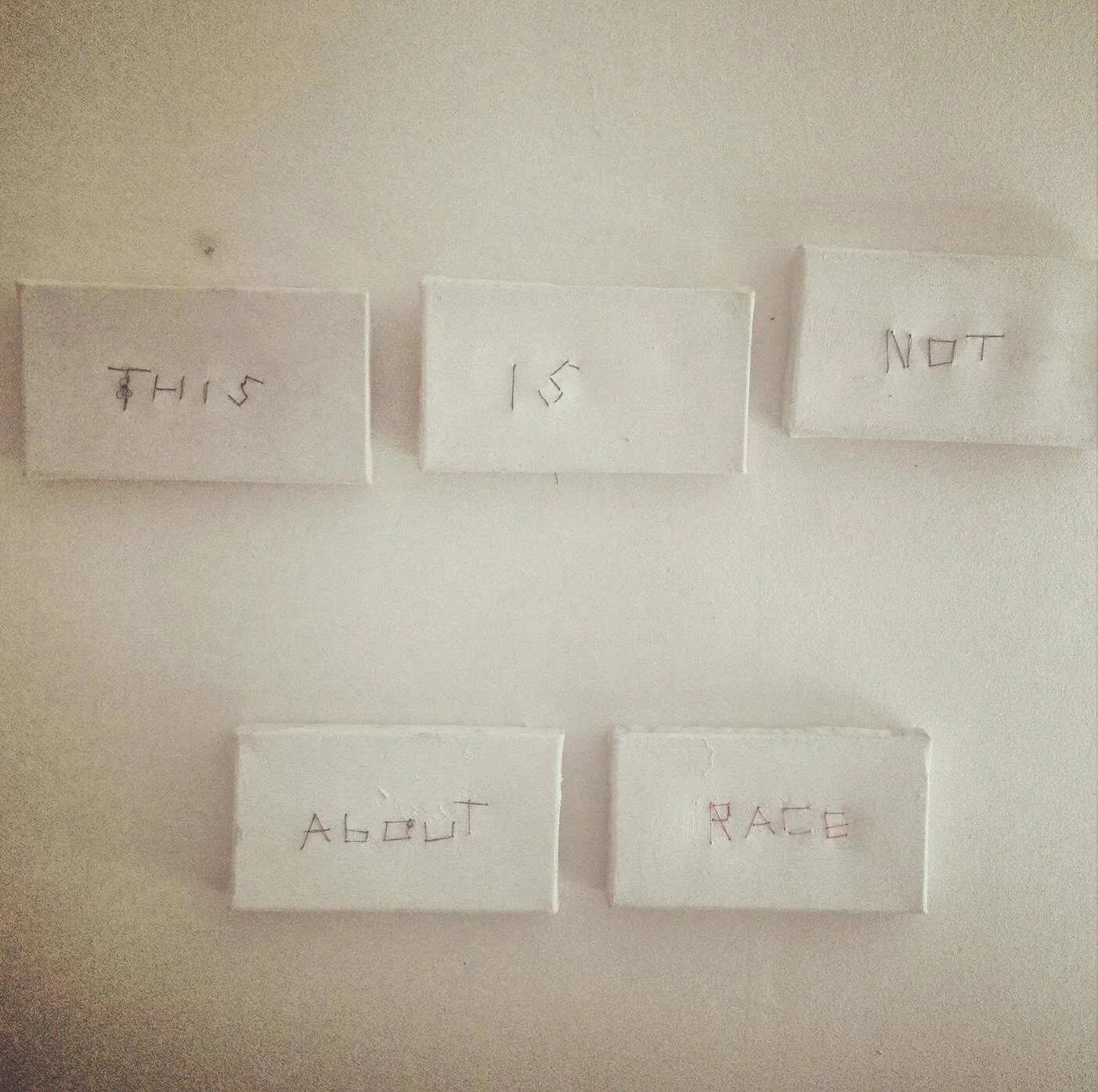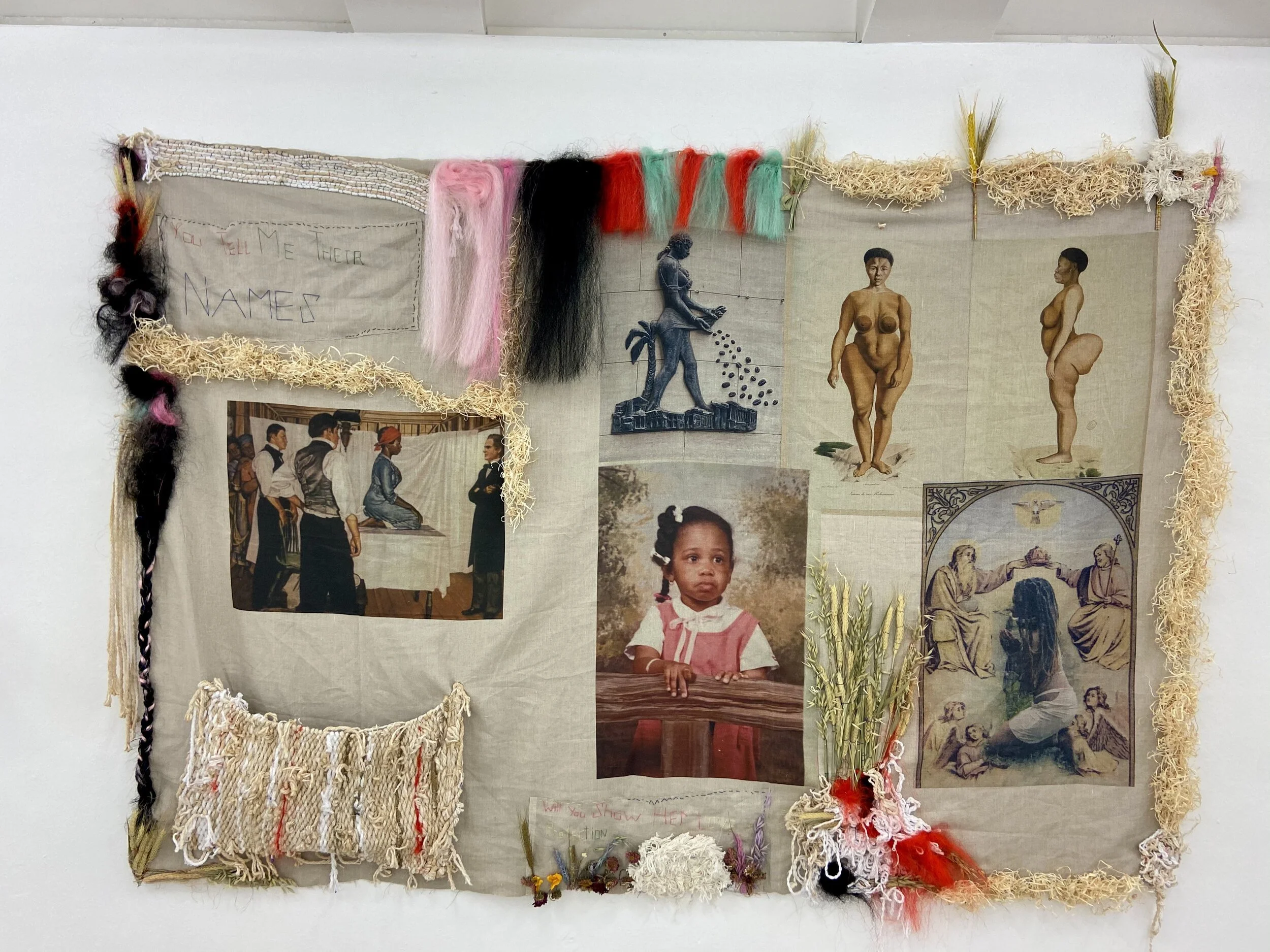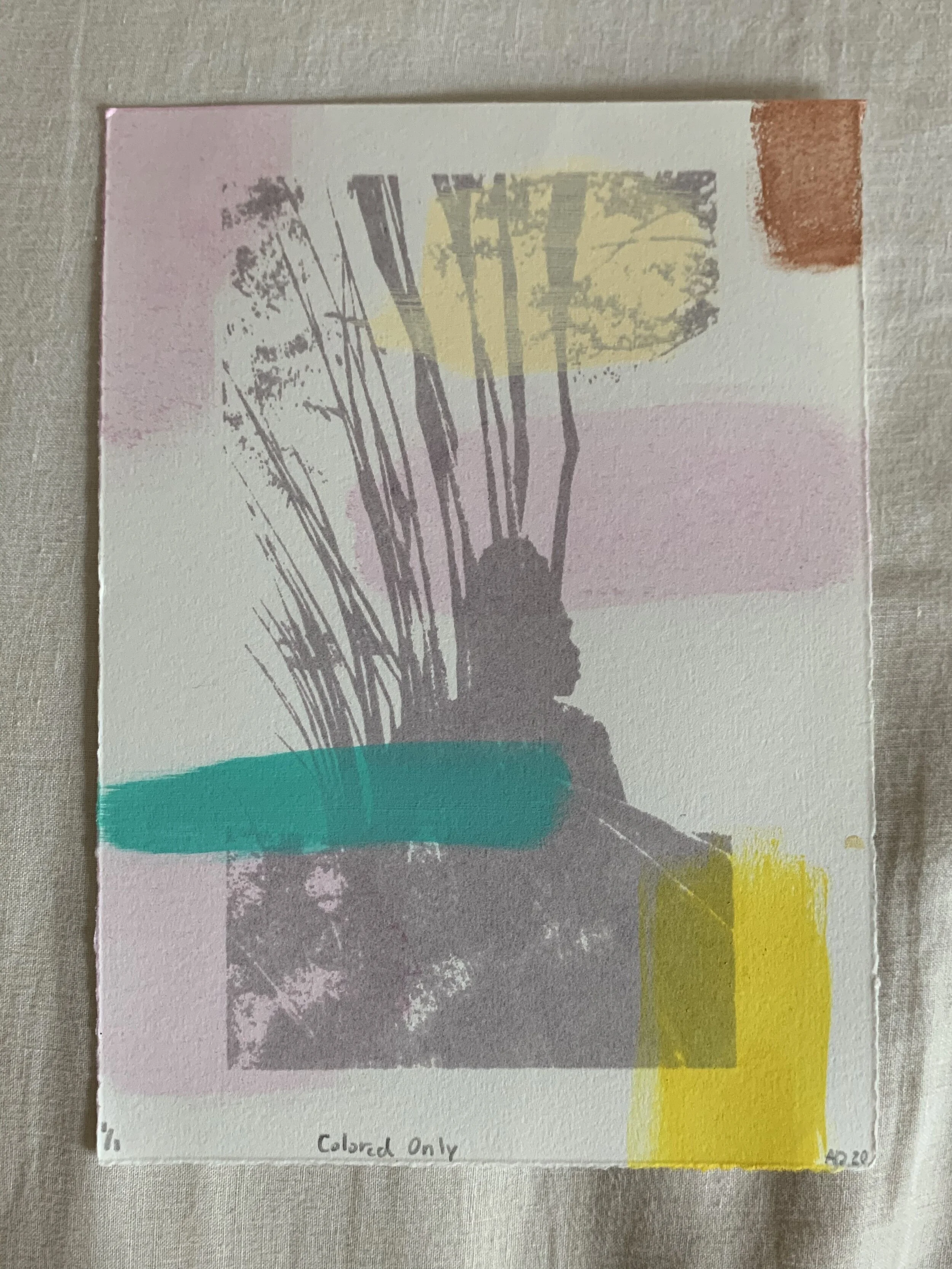Transformational art — Multimedia artist Amber Doe
October 2022—Amber Doe solo exhibition and artist talk at Pleasure World Gallery, Tucson AZ.
October 2022—Amber Doe solo exhibition and artist talk at Pleasure World Gallery, Tucson AZ.
Photo by Antonio Palmieri
Amber Doe’s work is not just for humans. She calls it Trans Species Ancestor Worship. She uses the term trans species, she says, because the nature of her work is to think critically beyond the human experience to the experience of animals or the experience of plants even. She’s advocating for them the way she’s advocating for human story telling. Her term Ancestor worship relates to the palpable presence her ancestors have in her work and thoughts in present life. We talked about her not fitting neatly into a category as an artist. About being honest with her work even if it touches upon subject matter that makes people uncomfortable. She said people try to put her in a box of “deconstructing black female identity,” yet her work and her concern goes beyond that precisely because she knows that everything any of us does affects more than ourselves. She’s been encouraged to identify with the Afrofuturism art movement. But doing so would betray her own narratives that are based on bringing the past into present space. She’ll leave contemplation about the future to others.
“I feel like a method actor as an artist where I’m asking the audience to be exactly there with me. Even if it's uncomfortable.”
Mary and I have known Amber since the early 2000’s when we met in Brooklyn. She has a warm and striking presence. It’s hard not to be drawn to her megawatt smile. We’ve stayed in touch even after we all left New York. We caught up over Zoom to talk about her work and as usual, walked away inspired and energized. She touched on the post George Floyd era in the U.S and what she described as the “palpable, seemingly insatiable interest in Black suffering” and how she does not want her work to feel that it depicts “black suffering for black suffering’s sake".”
We also talked about the inspiration behind her jewelry line, La Madrada, and of love and loss, ancestors and motherhood—a role she unexpectedly found herself in when she and her mother became the legal guardians of her sister’s young daughter. To know Amber is to understand how deeply she cares for her family, so we weren’t surprised when we heard she left New York and moved to Arizona to become a mother to her adorable niece, Ruby.
The desert environment of Arizona and her lived experience as a Black woman with indiginous roots influences the materials she uses in her art: palm leaves, branches, flowers, hair extensions, and cotton rope. Her self portrait is a large scale fiber art, woven with cotton rope.
Photo by Liz Duncan
“Self Portrait”
“Self Portrait is a reaction to not feeling at home in my own home (country). In an attempt to transmute my outsider status I looked to the spider. A fearsome, magical creature that can create its home anywhere. I made my own home/reflection. Cotton a cash crop, my ancestors a cash crop. Lynching rope. American wealth as rope. Unraveled and reshaped into my image.”
—Amber Doe
Some of Amber’s textiles are flat pieces she calls “sails.” The sail she feels most close to one she made while working in Rome for Ssehura, also known as Sarah Baartman. Ssehura was born in 1789 at the Gamtoos river in what is now known as the Eastern Cape of South Africa. She belonged to the cattle-herding Gonaquasub group of the Khoikhoi. Her mother died when she was aged two and her father, who was a cattle driver, died when she reached adolescence. At age 16, she was taken from South Africa to England and exploited and objectified as she was paraded before a white audience who paid to view her body. Amber wanted to consider Ssehura in another way:
“When I decided I was going to create a sail to her, I decided I am not going to reassess the trope of her physicality and bring that into it. I wanted it to be elements of things that were important to her. Like using silver hair to braid it because braiding to me feels really loving and feels really tender. And feels like something you do when you care for someone.”
An example of transformation in Amber’s art is the addition of snakeskin that came from the desert to Ssehura’s sail. She said to her it represents the shedding of the horrible existence Ssehura experienced on this material plane as she sails into liberation on the next one.
“A note about sails. They are displayed on a wall but in the imagination they are part of a boat for black female freedom and liberation.
The black females that are the subjects of the sails deserve to be free. We are traveling together with our marine mammal kin to safer waters.”
See more of Amber’s work
I Want You: Portraits of My Mother is a video installation created in Buenos Aires, Argentina
As we were finishing our conversation, we asked Amber if there was anything else she wanted to touch upon for our blog feature. She asked that we let people know how meaningful it is to support artists, whether by sharing their work, buying their work or both. If you buy from her jewelry line Madrada or buy one of her fine art pieces, she finds it meaningful when someone shares why they made the decision to buy it. Because, she said:
“Art in reality is incredibly isolating, incredibly sad in a lot of cases because you’re constantly justifying your right to exist: every grant that you apply for, everything you tell yourself to keep going, you’re not wasting your life, wasting your time.”
[As artists] We don’t live in this other society. We live in the same society as everybody else where you’re seen as successful if you have this, this and this. We’re not outside of it, so it is very meaningful when people do share an artist's work…”
Mary added that supporting and amplifying artists is not just important for the artist, but for society as a whole. She considers art a public service. Appreciating artists and other creatives and enriching the lives of others with their work is why we created Friends of Fred™
This article called Being A “Patron of the Arts” In The Digital Age resonated with us:
“To be a patron in the modern age is to follow blogs and social media accounts, to leave reviews, to spread the word and post when you enjoy a work of art in any context. It is to share fundraising appeals and take artistic merit seriously, rewarding it when you see it in any way you can.”
-Emily Sinclair Montague
Amber has been awarded a Projecting all Voices fellowship 2022-2023 at the Herberger Institute for Design and the Arts, Ariona State University.
You can follow Amber Doe on Instagram and view her fine art at amberdoestudio.com and her jewelry line, La Madrada at lamadradajewelry.com
Love, Fred
All photography courtesy of the artist. All works of art are ©amberdoe2022
Amber has an upcoming solo exhibition and artist talk at Pleasure World Gallery, Tucson AZ opening in October 2022
Pleasure World Gallery, 174 E Toole Ave, Tucson, Arizona













